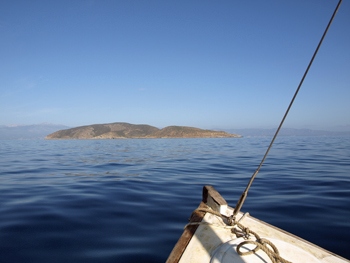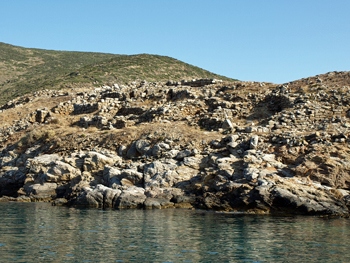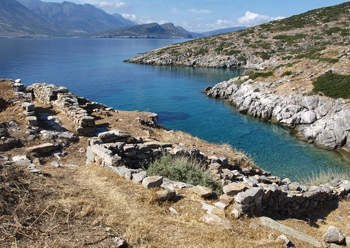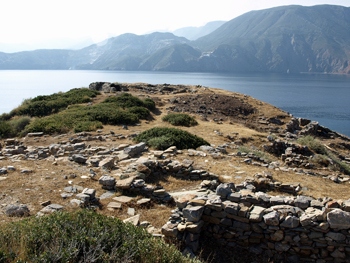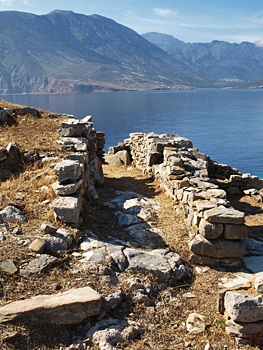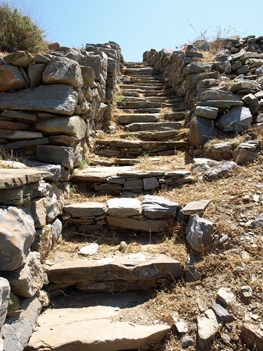The small Minoan town on the island of Pseira was first excavated by the American archaeologist Richard Seager in the first decade of the 20th century and more recently by Philip P. Betancourt and Costis Davaras, whose work from 1986 provides much of the information used here. The town began life as a small settlement as early as the Final Neolithic period and continued to grow throughout the Minoan period, reaching its highpoint during the Late Minoan IB period when the Minoan palaces were also at their height.
Pseira is a small uninhabited island, a couple of kilometres off the coast of Crete and a stone's throw away from another Minoan centre at Mochlos. A small peninsula on the south side of the island provided the Minoans with a harbour -- basically little more than a small beach -- protected from the north winds. The town grew up on both sides of the harbour, but the peninsula is the area where most buildings are to be found -- indeed they extend along its whole length.
A very impressive tall, steep flight of steps, known as the Grand Staircase, leads up from the beach to the town. Archaeologists have divided the town into four sections of which the two most impressive are Area A which extends from the top of the Grand Staircase southwards, down to the tip of the peninsula, and Area B, which extends uphill to the left of the Grand Staircase. Areas C and D are on the other side of the beach. Beyond Area D is the town cemetery.
Since there are more than sixty buildings on the site I will concentrate on some of the buildings highlighted by Betancourt and Davaras in their work. To the south of the Grand Staircase I will be looking at three structures (link at the bottom of this page), House AB, which was excavated by Seager and is sometimes referred to as Seager's House B; building AC, which is considered to be a shrine; and House AM which is also known as the House of the Three Buttresses.
To the north of the Grand Staircase I will be looking at House BC (link at the bottom of this page) and a newly uncovered structure near House BS at the north end of the town square. The town square was itself an unusual discovery. Many Minoan sites have a building with its own large courtyard, but this open area did not seem to be associated with any particular building and Betancourt and Davaras suggest that it resembles more the village square or plateia so common in modern Cretan villages.
Although originally surrounded by buildings, only the Western side of the plateia was excavated by Seager. To the south of the square the remains of a 9th century Byzantine monastery cover some of the Minoan buildings. Due to its irregular shape and the fact that even after the site was cleaned in early May 2012 much vegetation was left in the area covered by the plateia, it is not easy to picture.


